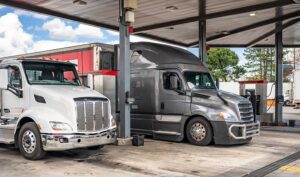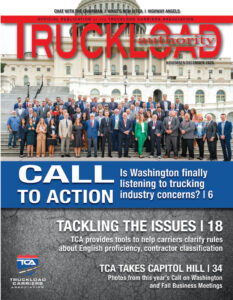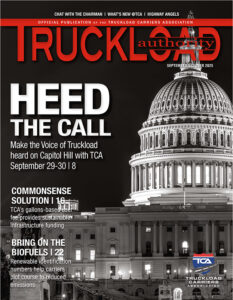BIPARTISAN TRUCK PARKING LEGISLATION REINTRODUCED
Bipartisan legislation aimed at creating safe, secure parking sites for commercial truck drivers has been reintroduced in the U.S. House of Representatives. Under H.R. 2187, known as the Truck Parking Safety Improvement Act, $755 million would be set aside from the federal Highway Trust Fund to help states finance projects that would increase the nation’s number of truck parking spaces.
The bill’s original cosponsors, Reps. Mike Bost (R-IL-12) — a former truck driver — and Angie Craig (D-MN-2), were joined by Reps. John Garamendi (D-CA-3), Susan Wild (D-PA-7), Dusty Johnson (R-SD-AL), and Pete Stauber (R-MN-8).
“I grew up in a family trucking business and spent years driving over the road,” said Bost. “Since then, we’ve seen the need for more trucks and drivers increase significantly, especially during the COVID-19 pandemic when trucking helped to keep our economy going. However, the number of truck parking spaces hasn’t kept pace. That means that drivers are forced to park in unsafe locations, which puts both them and other motorists at risk. Creating sufficient parking options for long-haul truck drivers will not only help keep them safe during their rest breaks but will also mean safer roads for everyone.”
Currently, there are more than 11 truck drivers for every one parking space. Studies show that 98% of drivers report problems finding safe truck parking, and the average driver spends 56 minutes of available drive time every day looking for parking. That wasted time amounts to a $5,500 loss in annual compensation, equivalent to a 12% annual pay cut. Moreover, 58% of all drivers admit to parking in unauthorized or undesignated spots at least three times per week to meet their parking needs.
“Without adequate parking, truck drivers are forced to pull to the side of the road or continue driving — both of which are risky,” noted Craig. “I’m proud to join Rep. Bost to reintroduce the act, which would increase truck parking spaces and improve safety for the folks who transport our goods, and everyone on our roads.”
The Truckload Carriers Association’s Vice President of Government Affairs David Heller said the lack of safe truck parking is top of mind for the association.
“Truck parking consistently ranks as one of the most important issues for the Truckload Carriers Association and trucking stakeholders across the country,” shared Heller. “On a daily basis, our companies’ drivers face dangerous conditions due to the lack of safe and convenient parking options. TCA applauds Reps. Bost and Craig for their dedication to resolving this critical safety obstacle through this legislation, which will devote significant funding toward the development of suitable parking on our nation’s highways.”
The legislation would not only benefit the trucking industry; it could also help make the nation’s roadways safer for all drivers, according to the National Motorists Association President Gary Biller.
“Overall, more Highway Trust Fund money needs to be spent on improving/expanding roads and bridges, but that should not be at the exclusion of adequate parking facilities for commercial motor vehicles,” noted Biller. “An expansion of options for long-haul truck drivers made possible by the Truck Parking Safety Improvement Act will benefit all highway users.”
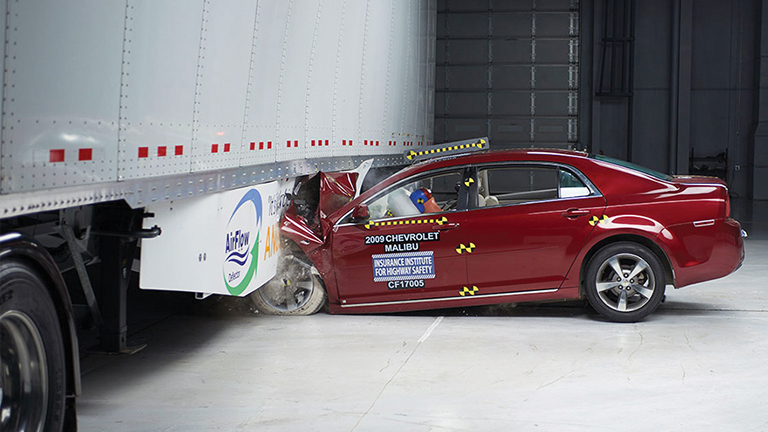
LEGISLATION REQUIRING UNDERRIDE GUARDS PROPOSED AGAIN
A bill requiring underride guards on certain new trucks and trailers would bring reassurance to families who have lost loved ones in underride accidents, but trucking groups have voiced opposition, citing safety hazards for truck drivers and the industry.
The term “underride” refers to an accident in which one vehicle partially slides underneath another, particularly when a passenger vehicle slides beneath a large truck.
Sens. Kirsten Gillibrand (D-NY) and Marco Rubio (R-FL) reintroduced the Stop Underrides Act.
The Stop Underrides Act would strengthen requirements for rear underride guards and add the requirement for single unit trucks. Specifically, the bill would require the installation of rear, side, and front underride guards on trailers and tractor-trailers weighing more than 10,000 pounds, as well as on single-unit trucks that have a carriage more than 22 inches above the ground and weigh more than 10,000 pounds.
Under current law, underride guards are not required on the sides or front of trucks. Underride guards are already required on the back of a trailer.
If the bill is passed, a committee would be formed to monitor the underride rulemaking process. Identical legislation has been referred to the U.S. House of Representatives by Reps. Steve Cohen (D-TN-9) and Mark DeSaulnier (D-CA-11). The bipartisan Stop Underrides Act is being referred to the Senate Commerce, Science and Transportation Committee and the House Committee on Transportation and Infrastructure.
This is the third time the bill has been introduced. Previous versions of the bill, which proposed retrofitting existing trailers and trucks, never got out of the committee. The bill was drafted by Marianne Karth and Lois Durso Hawkins, who started advocating for underride protection after their children died following separate underride crashes.
Karth and her children were traveling on Interstate 20 in Georgia on May 4, 2013, when a semi-truck hit the back of their vehicle, spinning the car around and forcing the vehicle underneath a second semi-truck. Karth and her son survived, but her daughters, AnnaLeah and Mary, were killed.
“I learned that it wasn’t the crash that killed them, because I was in the crash and sitting in the front seat,” shared Karth in a truck safety news conference. “We survived because our part of the car did not go under the truck. It was the underride.”
Hawkins, who lost her daughter, Roya, in a 2013 underride collision, agrees that it was the underride rather than the collision that led to her daughter’s death.
“If [underride protection] had happened, I wouldn’t be here today,” said Hawkins. “Many other families would not have suffered that loss either.”
US INFRASTRUCTURE GETS C- ON REPORT CARD FROM ENGINEERS
America’s infrastructure has scored near-failing grades for its deteriorating roads, public transit, and storm water systems due to years of inaction from the federal government, the American Society of Civil Engineers reports. Its overall grade: a mediocre C-.
In its “Infrastructure Report Card” the group called for “big and bold” relief, estimating it would cost $5.9 trillion over the next decade to bring roads, bridges, and airports to a safe and sustainable level. That’s about $2.6 trillion more than what government and the private sector already spend.
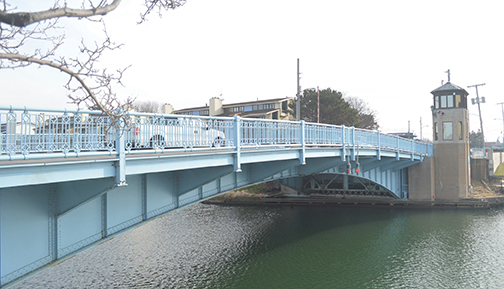
“America’s infrastructure is not functioning as it should, and families are losing thousands of dollars a year in disposable income as a result of cities having to fix potholes, people getting stuck in traffic or due to repairs when a water line breaks or the energy grid goes down,” said Greg DiLoreto, one of the group’s past presidents.
“It’s critical we take action now,” he stressed, expressing optimism that the federal government is now making it a “top priority.”
During Donald Trump’s four years in the White House, his administration often held “Infrastructure Week” events and touted transportation improvements. But it was not able to push Congress to pass any broad plan to update the nation’s roads and bridges, rails, and airports.
The overall C- grade on America’s infrastructure — reflecting a “mediocre” condition with “significant deficiencies” — is a slight improvement from its D+ grade in 2017. The group cited in part state and local government and private-sector efforts, which have turned to new technology to pinpoint water main leaks and prioritize fixes.
But of the 17 categories making up the overall grade, 11 were in the D range that indicated a “significant deterioration” with a “strong risk of failure.” They included public transit, storm water infrastructure, airports, and roads and highways, which make up the biggest chunk of U.S. infrastructure spending at $1.6 trillion, according to the group.
Four areas received Cs: bridges, which dropped from a C+ to a C in 2021, as well as energy, drinking water, and solid waste. Just two areas — ports and rail — scored higher, with a B- and B, respectively.
President Joe Biden’s administration and lawmakers are laying the groundwork for a long-sought boost to the nation’s roads, bridges and other infrastructure of $2 trillion or more.
Transportation Secretary Pete Buttigieg, who has met with lawmakers about the effort, has said the aim would be to rejuvenate the post-coronavirus pandemic economy and boost crumbling roads and bridges while encouraging alternative forms of transportation to cars, as well as create thousands of green jobs by making environmentally friendly retrofits and public works improvements.
In its report card, the group said years of inaction has had consequences. It cited growing costs being passed along to consumers as cities and states grapple with funding shortages to fix roads and bridges and delay other major upgrades to infrastructure.
SENATORS REINTRODUCE BILL TO PROMOTE WOMEN IN TRUCKING
The Promoting Women in Trucking Workforce Act was reintroduced in Congress in late February by members of the Senate Committee on Commerce, Science and Transportation, including Sens. Tammy Baldwin (D-WIS), Jerry Moran (R-KAN), Deb Fischer (R-NEB), and Jon Tester (D-MONT).
“In Wisconsin, we make things, and we need to ensure we have a strong workforce to transport our goods to market,” said Baldwin. “Removing the barriers that get in the way of women pursuing and retaining careers in trucking is key. I’m proud to lead this bipartisan effort with Sen. Moran, because more job opportunities for Wisconsin women will lead to more economic security for working families.”
The Promoting Women in Trucking Workforce Act (S.2858) was originally introduced in the last Congress, and was referred to the Committee on Commerce, Science, and Transportation. The bipartisan legislation, designed to support women in the trucking industry, directs the Federal Motor Carrier Safety Administration (FMCSA) to establish and facilitate a Women of Trucking Advisory Board to promote organizations and programs that (1) provide education, training, mentorship, or outreach to women in the trucking industry; and (2) recruit women into the trucking industry.
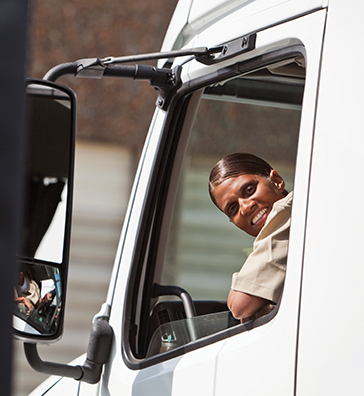
“Over the past year, we have relied on the essential service the trucking industry provides to transport critical resources to Kansas and across the country during the COVID-19 pandemic,” shared Moran. “As the trucking industry continues to face a driver shortage, we must find new ways to recruit and retain drivers, including supporting women pursuing careers in trucking.”
The U.S. Bureau of Labor Statistics reports that women make up 46.8% of the nation’s total workforce but make up just 24% of the U.S. trucking industry — and only 7% of drivers are women.
“Truckers are essential to keeping Nebraska’s economy running, but the industry is experiencing a shortage of drivers,” said Fischer. “Examining ways to encourage more women to enter the trucking industry is good policy and could connect more women with good jobs.”
Tester noted that, while women are a growing force in transportation, they still face obstacles when pursuing careers in trucking.
“This bill is a hat trick, ensuring we’re breaking down barriers for Montana women, bringing more good-paying jobs to the Treasure State, and strengthening our workforce so we can deliver more of our world-class products to market,” added Tester.
The legislation received support from shipping and trucking organizations, including FedEx, the Women In Trucking Association (WIT), United Parcel Service (UPS) and others.
WIT President and CEO Ellen Voie shared that she believes the proposed advisory board would help increase opportunities for women in a variety of occupations within the trucking industry, including drivers, technicians, company owners, trainers, and more.
“Although women have strengthened their presence in the supply chain over the past few years, we know there are still issues that cause women to reject a transportation career,” she said. “Our goal is to better identify these concerns and address them to create a more diverse industry.
Under the bill, the Women of Trucking Advisory Board would identify barriers that hinder the entry of women to the trucking industry, work across organizations and companies to coordinate formal education and training programs, and help identify and establish training and mentorship programs for women in the industry. The legislation also requires the FMCSA administrator to submit a report to Congress on the board’s findings and recommendations.
U.S. Reps. Mike Gallagher (R-WIS-8) and Sharice Davids (D-KAN-3) introduced the bipartisan companion legislation in the U.S. House of Representatives.
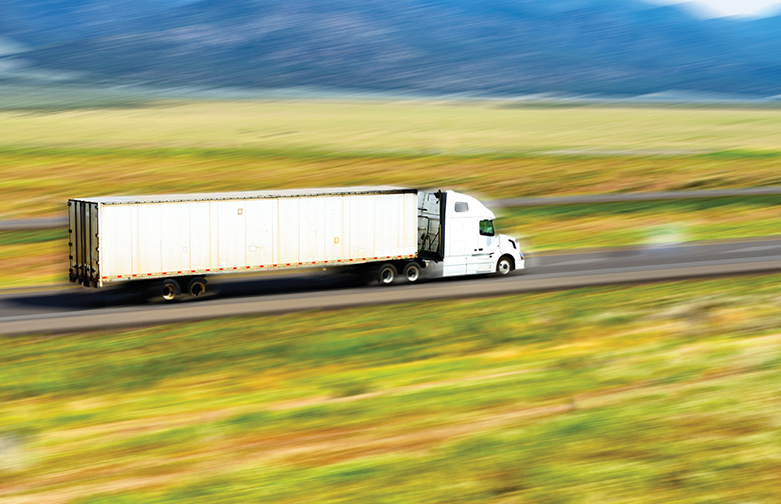
OPERATION SAFE DRIVER WEEK
The Commercial Vehicle Safety Alliance’s (CVSA) Operation Safe Driver Week will take place July 11-17 with an emphasis on speeding. During this week, law enforcement personnel will be on the lookout for commercial motor vehicle drivers and passenger vehicle drivers engaging in risky driving behaviors in or around a commercial motor vehicle. Identified unsafe drivers will be pulled over and issued a citation or warning.
“Data shows that traffic stops and interactions with law enforcement help reduce problematic driving behaviors,” said CVSA President Sgt. John Samis with the Delaware State Police. “By making contact with drivers during Operation Safe Driver Week, law enforcement personnel aim to make our roadways safer by targeting high-risk driving behaviors.”
CVSA selected speeding as its focus this year because traffic fatalities increased nationally over the last year, despite a drop in roadway travel due to the pandemic. According to the National Safety Council’s (NSC) preliminary estimates, the estimated rate of death on roads last year increased 24% over the previous 12-month period, despite miles driven dropping 13%. The increase in the rate of death is the highest estimated year-over-year jump NSC has calculated in 96 years.
In addition to speeding, law enforcement personnel will be tracking other dangerous driver behaviors throughout the week, such as reckless or aggressive driving, distracted driving, following too closely, improper lane change, failure to obey traffic control devices, failure to use a seat belt, evidence of drunk or drugged driving, etc.
CVSA’s Operation Safe Driver Program was created to help to reduce the number of crashes involving commercial motor vehicles and passenger vehicles due to unsafe driving behaviors. Operation Safe Driver Week is sponsored by CVSA, in partnership with the Federal Motor Carrier Safety Administration and with support from the motor carrier industry and transportation safety organizations. This initiative aims to improve the behavior of all drivers operating in an unsafe manner — either in or around commercial motor vehicles — through educational and traffic enforcement strategies.
The Truckload Authority News Staff, comprised of award winning journalists and graphic artists, produces content for Truckload Authority, working in cooperation with the Truckload Carriers Association staff. Truckload Authority aims to keep TCA members abreast on the latest trends in the trucking industry as well as articles that feature TCA member executives and drivers. The Truckload Authority staff is based in Little Rock, Arkansas.











